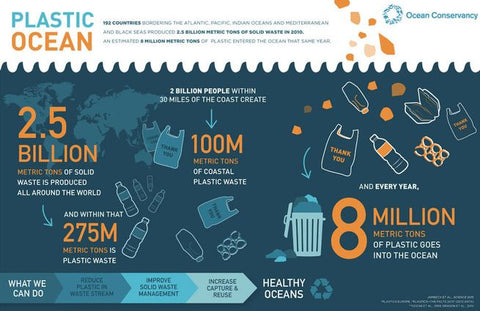National Marine Week
Written by Mollie Knight
Saturday marked the start of National Marine Week – a campaign started by the Wildlife Trusts to celebrate marine life throughout the UK. Despite its name, it actually lasts for 15 days and aims to showcase the diversity of marine life on our shorelines. After this mega heatwave we’ve had, I think we’re all in need of cooling off – so why not dive in (pun intended) to see some of the creatures that roam our shores and what we can do to ensure their life remains unthreatened by climate breakdown. You might already be familiar with some of these sea-dwelling fellows, but I spent practically my entire childhood on the beach in Cornwall and even I was surprised by some of these – so keep reading to learn a little more about UK wildlife…
Small-spotted Catshark

Source: Marc Hagen
You might not know but the UK actually has sharks that call our waters their home. One of which is the small-spotted Catshark, also known as lesser-spotted dogfish. You might not ever see one of these though, as they tend to live in the mud and sand up to 400m deep. Catsharks are oviparous, which means they deposit egg cases in which the babies grow. These egg cases have gained a mythological status as they often wash up on shorelines and some people may have believed they were purses for treasures belonging to mermaids – hence their colloquial name ‘Mermaid’s Purse’. Though these Catsharks are considered of least concern due to their stable population levels, certain threats to all sea life still make them vulnerable to the effects of climate breakdown.
Basking Shark

Source: Chris Train
Another shark that roams the UK shores during the summer months is the Basking Shark. It is the second largest living species of shark, just after the Whale Shark. No need to fear though, all this wide-mouthed creature is interested in eating is tiny plankton which it finds at the surface of the sea. That’s actually how it got its name, as people thought it was basking in the warmer surface water. Seeing these gentle giants in the waves at home always felt very special to me, but their future on this planet is far from secure. Basking sharks have an endangered conservation status and have, tragically, fallen victim to overfishing. They are commercially fished for eating, their fins, shark liver oil and animal feed – some parts are also used in traditional Chinese medicine and as an aphrodisiac in Japan. Without intervention these factors could lead to their extinction.
Bottlenose Dolphin

Source: Didier & Marie Ruppe Roland
Dolphins don’t just live in tropical places or holiday destinations, during the warmer months you can often find bottlenose dolphins off the coast of the UK too. Bottlenose dolphins are super recognisable thanks to their upturned mouth that looks like a permanent smile. They can swim up to 18 miles an hour and can hold their breaths for up to three minutes! They’re super intelligent too, many being the focus of intelligence research and stars of aquarium shows. Despite being considered of least concern on the IUCN red list status, Bottlenose dolphins are still under threat. Not only due to environmental factors, but they also can get fatally tangled in commercial fishing nets or caught by trawlers fishing for other fish as bycatch.
Cuttlefish

Source: Alex Fine
Similar to the mermaid’s purse, you’re more likely to find the remnants of these little guys on the shore than see them in the water, with the chalky cuttlebone washing up on beach all over the country. Cuttlefish are in the cephalopod class which includes squid and octopuses. Rather surprisingly, they are fierce predators and can even eat smaller cuttlefish. They also can change their colour and patterns for camouflage, to distract a predator or to attract a mate. The cuttlefish is another creature on this list that is considered “least concern”, but, as mentioned, that doesn’t mean that it faces no consequences as result of climate breakdown.
Ocean Sunfish

Source: The-resa
The final animal on this list is the Ocean Sunfish, which graces the UK shores in summer. I have never been fortunate enough to see one in real life, but many people who surf, sail or row have told me stories of encountering these rather peculiar looking fish. The Ocean Sunfish is one of the heaviest bony fish in the world, with adults weighing up to a whopping 2,000kg! Sunfish are often mistaken for sharks when they are soaking up the rays near the surface, thanks to their dorsal fin that sticks out of the water. They also have a beak-like mouth that helps them eat large fish, jellyfish, crustaceans and squid. Populations are decreasing and have an IUCN red list status of vulnerable. Often times they get caught by nets intended for other fish and eat waste that is in the sea, like plastic bags, as a result of mistaking them for jellyfish or other food.
Biggest threats facing marine life in the UK
I’ve sort of covered the kinds of things that threaten wildlife populations in the UK’s shores, but I’d like to delve a bit deeper and find out what we can do to help.
The biggest issues we are facing at the moment are biodiversity loss, ocean warming, overexploitation, plastic pollution and alien species. Ultimately, most, if not all, of these issues are as a result of human intervention. Overexploitation is usually as a result of a high demand for a certain species – whether for food, medicinal or other purposes. Ocean warming, as well as ocean acidification and reduced dissolved oxygen levels, are a huge threat to marine life and are thanks to our good old friend, climate change – an issue for which humans have been to blame for quite some time. Plastic pollution is something we are all familiar with (if you missed our blog post on the problem with plastic – check it out here). We have all seen the horrific photos of animals with plastic around their neck or plastic-filled carcasses on the beach. Once again, a human invention.

Source: Ocean Conservancy
So what can we do to reduce these problems? Obviously, we can all try and make more carbon-friendly choices like opting for a vegetable option instead of meat or cycling instead of driving, but (I’m sure you’re sick of me saying this by now), there’s only so much we can do as individuals, especially as it is believed just 100 companies are responsible for 71% global emissions. That’s why systematic and policy changes are the most important things we can push for, alongside making better choices in our own lives. This could include pushing for more marine protected areas and ocean wildlife reserves.
As over-fishing is a huge issue too, when you are going to eat fish, try researching different species to see which are under threat or reading the packet carefully to see where your supermarket fish was caught. I like the Marine Conservation Society’s Good Fish Guide to see which fish to avoid and which make good choices.
If you liked this blog post let us know your thoughts in the comments below, and if you have a photo of any amazing creatures that you’ve seen in our waters, let us know over on Instagram!
